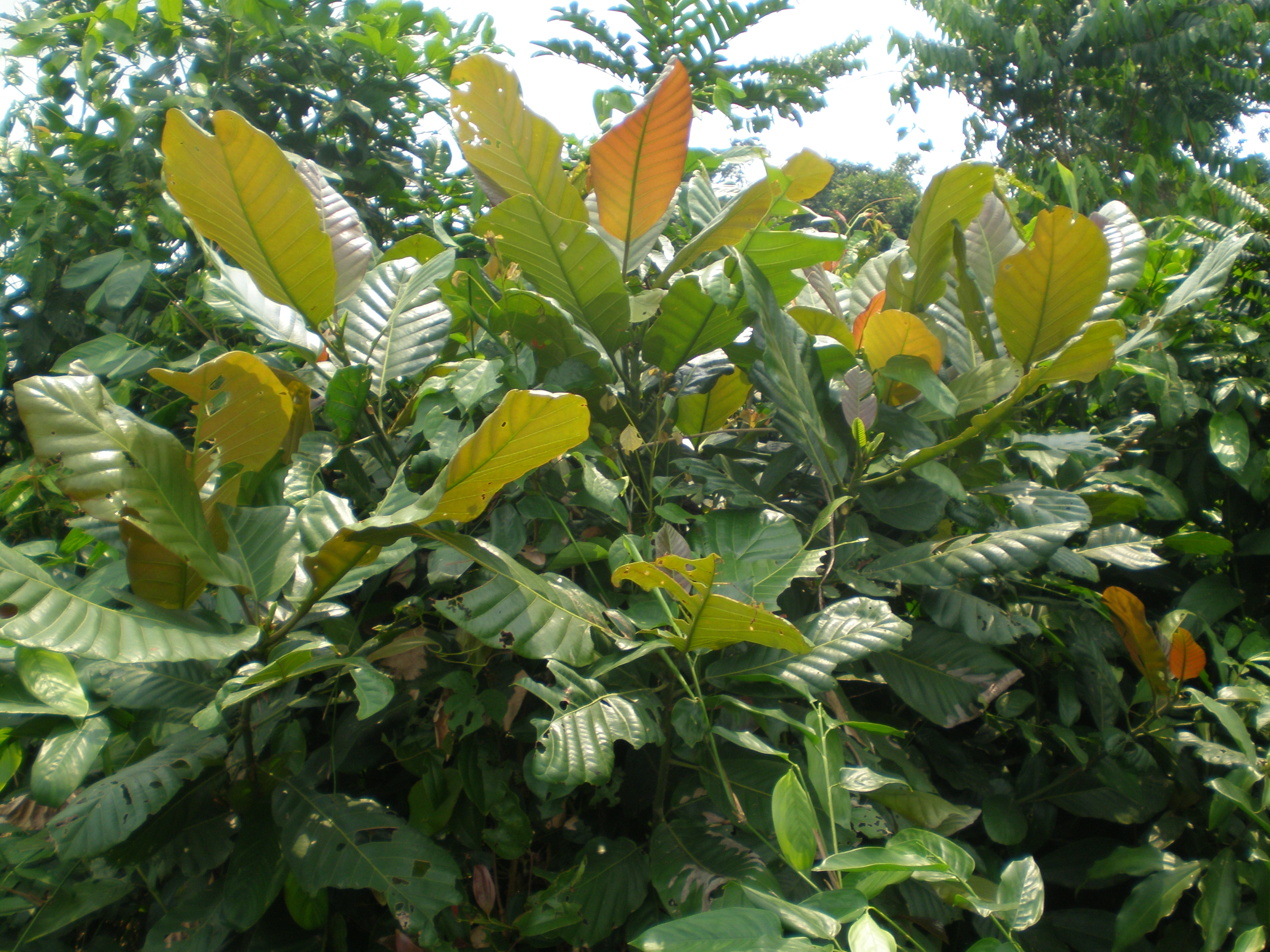Uapaca guineensis

|
|
Uapaca guineensis Common Names: Wild Mahogany, Red Cedar, Sugar Plum,
Wild Mango, False Paletuvier Scientific
Classification Kingdom: Plantae Clade: Tracheophytes Clade: Angiosperms Order: Malpighiales Family: Phyllanthaceae Genus: Uapaca Species: U. guineensis Binomial Name: Uapaca guineensis Müll.Arg. Synonyms: Antidesma guineensis G.Don ex Hook., Uapaca bingervillensis Beille, Uapaca gabonensis Pierre ex Pax & K.Hoffm., Uapaca seretii De Wild., Uapaca perrotii Beille Morphological Description Uapaca guineensis, known as Wild Mahogany or Sugar Plum, is a small to medium-sized
evergreen tree, typically 15–30 m tall, occasionally reaching 50 m. It is
characterized by: · Trunk: Straight or fluted bole, 80–120 cm in diameter, with stilt
roots up to 5 m high in swampy areas · Leaves: Obovate, 10–25 cm long, 5–15 cm wide, glossy dark green,
with slightly wavy margins, clustered at branch ends · Flowers: Small, yellow-green, in axillary clusters, appearing from
March to May · Fruit: Globose drupes, 2–4 cm in diameter, green turning
yellow-orange, with sweet edible pulp and small black seeds Its dense, low-branching
crown and stilt roots make it distinctive in wet habitats (Breteler, 2013). Distribution and Habitat Uapaca guineensis is widespread across West and Central Africa, from Senegal
to Angola, including Nigeria, Côte d’Ivoire, Gabon, and DR Congo. It thrives
in: · Habitats: Swamp forests, riverbanks, wetlands, and secondary forests · Climate: Wet tropical biomes, with rainfall of 1,200–2,500 mm
annually, temperatures of 20–32°C · Soil Conditions: Moist, well-drained loamy or sandy soils
(pH 4.5–6.5), often waterlogged · Light: Full sun to partial shade, tolerating seasonal flooding Its preference for moist
environments supports its ecological role (Orwa et al., 2009). Ethnopharmacology Uapaca guineensis , commonly known as wild custard apple or false walnut, is a
medicinal plant widely used in African traditional medicine for its diverse
therapeutic properties. Various parts of the plant—roots, bark, leaves, and
fruits—are employed to treat ailments such as infections, fevers, inflammation,
pain, and digestive issues. It is traditionally valued for its antimicrobial,
anti-inflammatory, analgesic, antioxidant, antimalarial, and antidiabetic
effects. The root extract is also reputed for its aphrodisiac properties,
particularly in managing male sexual dysfunction. Phytochemical analyses have
identified compounds such as lupeol, betulin, betulinic acid, quercetin, rutin,
and β-sitosterol, which are believed to contribute to its pharmacological
effects. While traditional use is extensive, scientific validation through
clinical and pharmacological studies is still needed to fully confirm its
efficacy and safety. · Anti-inflammatory/Analgesic: Leaf pulp with palm oil reduces
inflammation in rats (50–200 mg/kg), used in Nigeria for migraines and rheumatism
(Thomas et al., 2021). · Antileishmanial: Root bark extracts inhibit Leishmania donovani (IC₅₀ 8–15 µg/mL),
applied to leprous sores in Côte d’Ivoire (Mouthé et al., 2022). · Gastroprotective: Root bark decoctions treat
gastrointestinal issues and edema in Congo. · Aphrodisiac/Fertility: Root infusions enhance libido and treat
female sterility in Gabon. · Pediatric Use: Bark decoctions strengthen rachitic children in DR Congo. · Dental Care: Root bark relieves toothache in Sierra Leone ⚠ Toxicity Profile: No significant toxicity reported (LD₅₀ >
5,000 mg/kg in rats for fruit extracts). Safe in traditional doses, though
prolonged use of root bark may cause mild gastrointestinal upset. Professional
guidance is advised (Mouthé et al., 2022). Phytochemistry The plant’s medicinal
and nutritional properties stem from a diverse phytochemical profile: · Triterpenoids: Lupeol, betulin, betulinic acid, with anti-inflammatory and
antileishmanial effects · Flavonoids: Quercetin, rutin, providing antioxidant and antimicrobial
benefits · Phenolics: Physcion, linked to skin healing properties · Sterols: β-sitosterol, β-sitosterol-3-O-β-D-glucopyranoside,
supporting fertility · Tannins: Astringent compounds aiding gastrointestinal health These compounds,
identified via NMR and HPLC-MS, underpin its therapeutic potential (Mouthé et
al., 2022). Additional Uses · Edible Uses: Fruits (rich in vitamins C and A) eaten raw or made into a
drink in Nigeria, tasting like medlar or dried prunes. · Environmental Uses: Stilt roots stabilize riverbanks and
prevent erosion in swampy areas; used in reforestation (Breteler, 2013) · Industrial Uses: Timber (Rikio) for carpentry, canoes, and
fuelwood; red sap as a dye (Orwa et al., 2009) · Ornamental Uses: Planted for shade in gardens, coffee, and
cocoa plantations References
External Links More Pictures |
|
| Compounds of Uapaca guineensis | |
| References |